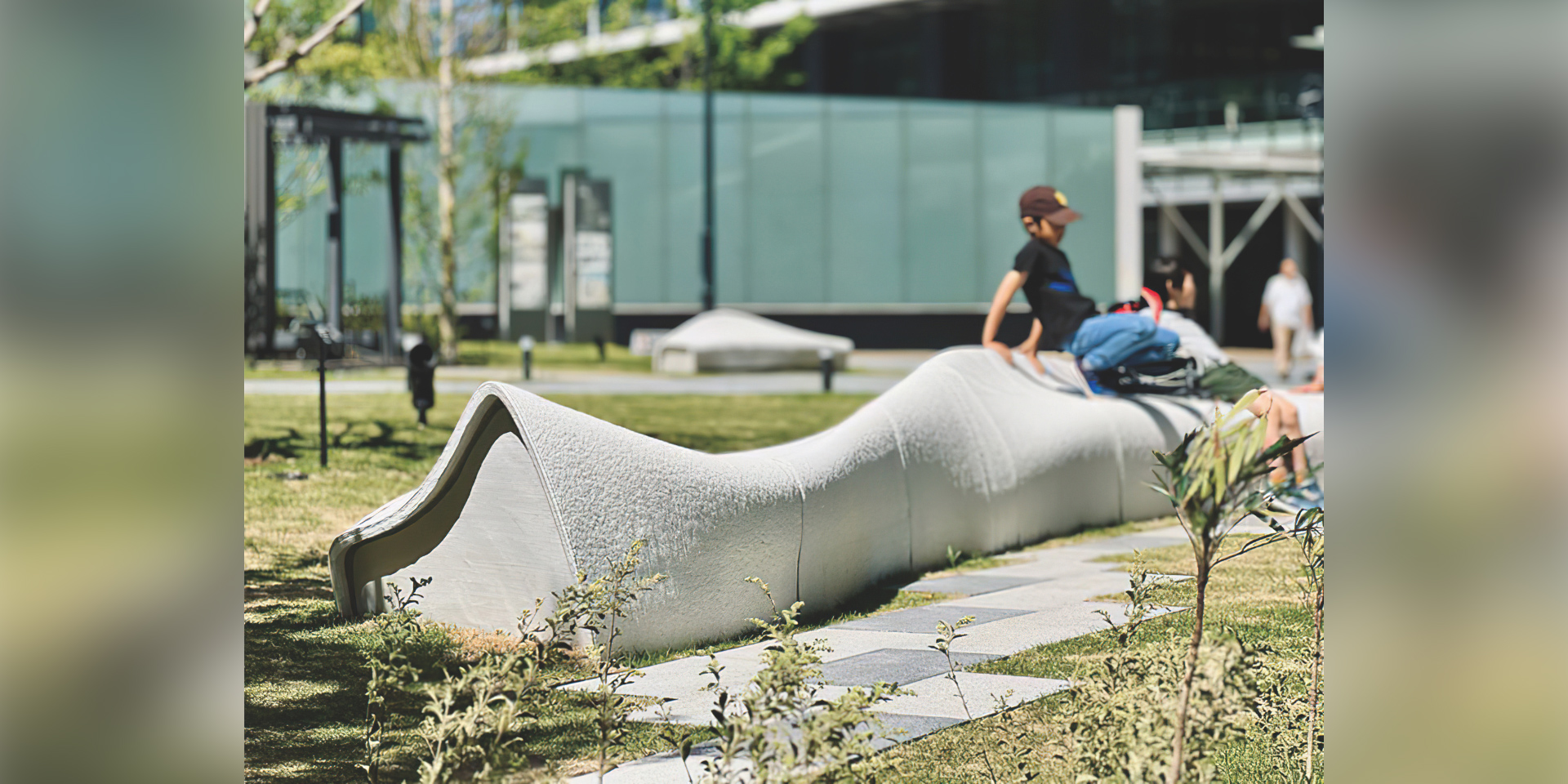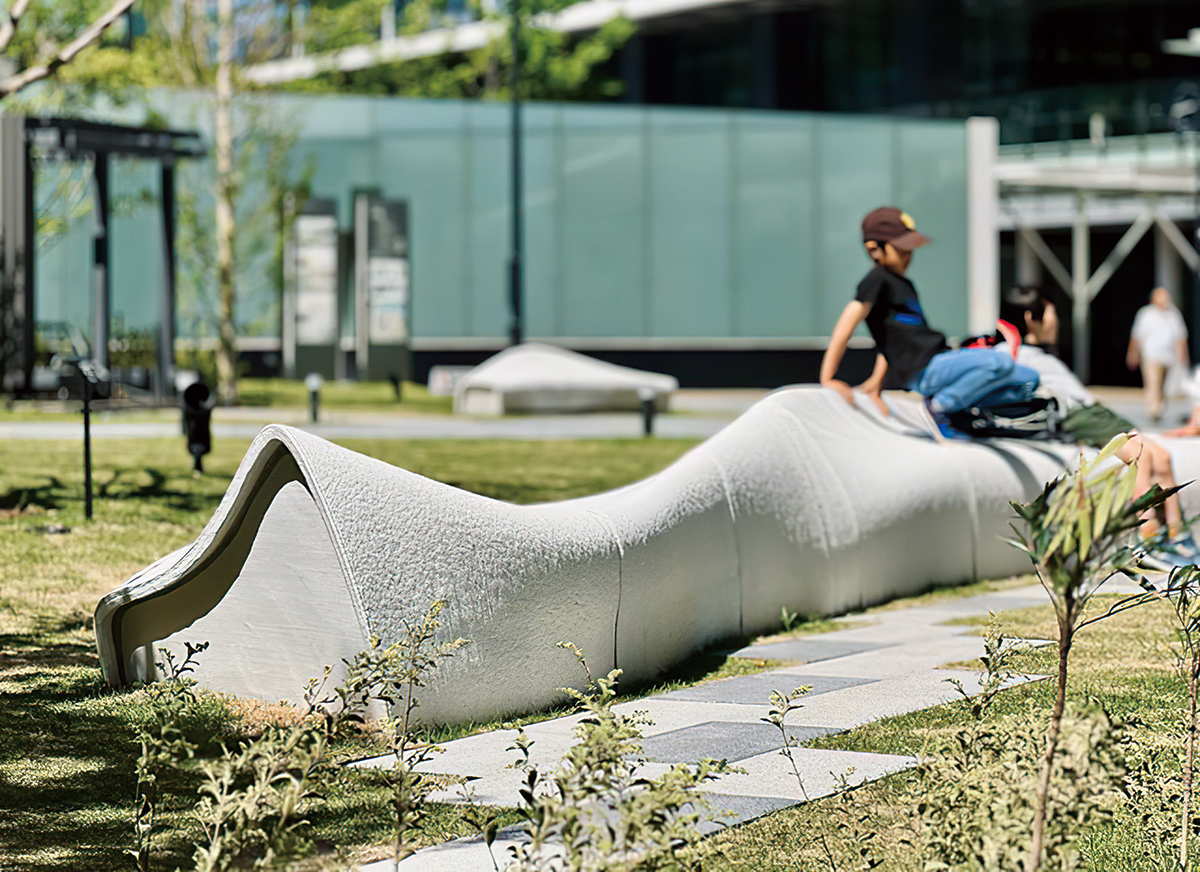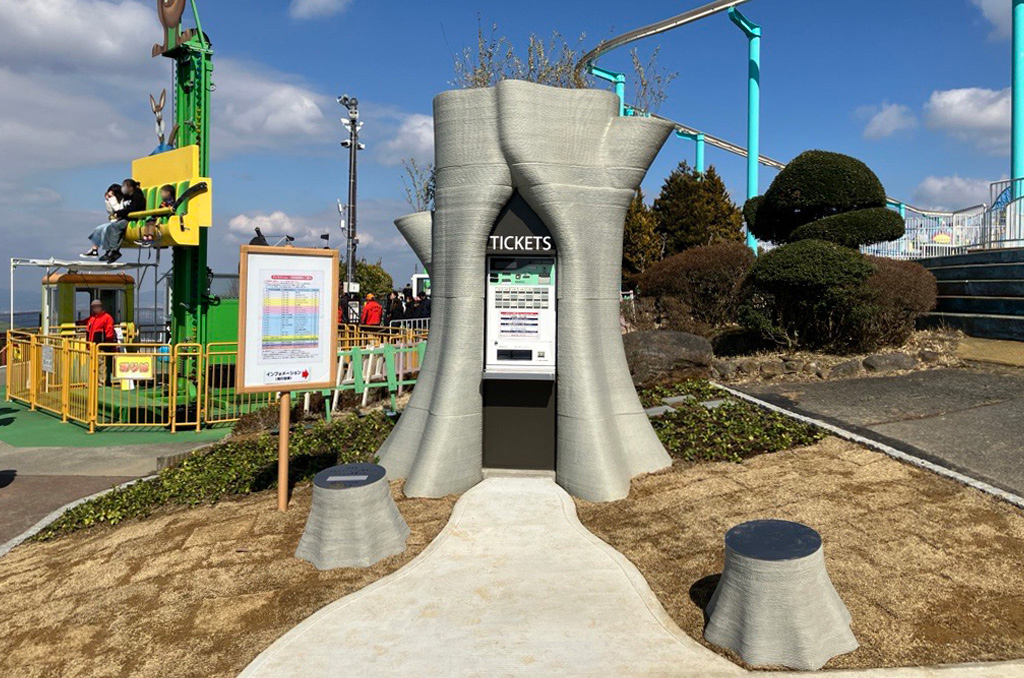Please note that some content is only available in Japanese

3D Printing in Architecture
Turning free-form design ideas directly into reality
POINT
-
Achieving architecture built entirely with 3D printing
Introduction video of 3dpod
Obayashi's 3D printer demonstration building, 3dpod, was constructed using a unique structural system in which 3D-printed formwork is filled with SLIM-Crete. As a concrete structure built with a cement-based 3D printer, it is the first in Japan to receive certification from the Minister of Land, Infrastructure, Transport and Tourism under the Building Standards Act.
All components of the above-ground structure, including walls and floors, were made using a 3D printer, with all walls directly printed on-site.
The name “pod” refers to forms such as a silkworm cocoon or a pea pod—reflecting the building’s organically rounded, cocoon-like exterior and peanut shell-like floor plan. -
Creating elegantly streamlined exterior benches

A completed bench
Located in the Gate Plaza lawn area of Yokohama Symphostage, a large-scale mixed-use complex in the Minato Mirai 21 district, the exterior benches were manufactured using 3D printing. These organically curved benches, designed to accommodate a wide range of users in a variety of seated positions, are inspired by the graceful movements of a whale—diving, turning, facing upward, sideways, or swimming straight. The design reflects these motions in flowing, human-scale curves.
There are five benches in total, each measuring approximately 3.5 to 7.3 meters in length. Each bench was assembled on-site by placing together multiple precast units made with a 3D printer. -
Reproducing complex shapes using a proprietary construction method

The completed ticket booth
At Ikoma Sanjo Amusement Park, located atop Mount Ikoma on the border between Ikoma City in Nara Prefecture and Higashi-Osaka City in Osaka Prefecture, a new ticket booth inspired by the form of a tree has been created. Using a proprietary construction method that involves filling 3D-printed formwork with SLIM-Crete, the structure achieves a complex and free-form shape. The ticket booth stands 2.7 meters tall, 2.5 meters wide, and 2.5 meters deep. It was manufactured off-site and then installed on location. The outer shell was printed in five separate parts, which were assembled in sequence from the base upward, with SLIM-Crete filled inside each part as it was assembled. By controlling print thickness and nozzle angles at will, the construction team was able to produce curved components and achieve a more complex form than conventional methods allow.
